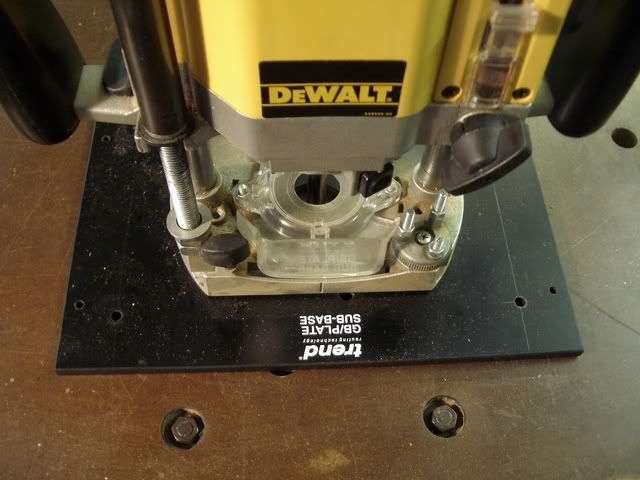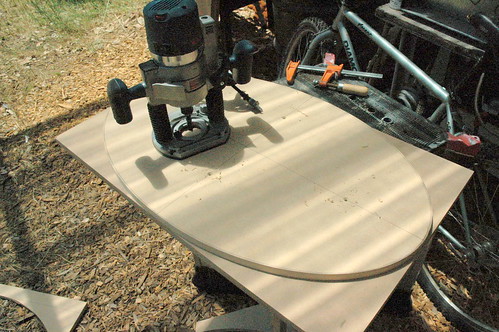Niles Crane
Established Member
- Joined
- 28 Jan 2010
- Messages
- 31
- Reaction score
- 0
Morning all,
Wondering if anyone can shed some light on a problem I had yesterday evening with this router.
I was using a template cutting bit (straight edge, 1/4" shank) on two pieces of 20mm ply that had been glued together. The top layer had already been prepared and the lower had been cut to within about 5mm of the edge of the top.
Within a few seconds of starting the cut the locking mechanism on the router released, the router moved up and I ended up with a nice divot/ track/ foobar in the top of my piece.
I started cutting again, setting the lock more securely and it released again a little into the cut.
The cutter didn't seem to be cutting smoothly and it's vibrations would have released the lock, but I would imagine the mechanism should be able to cope with some vibration.
Speed setting on the router was 3.
Would anyone know if this is something I've done wrong or is there a problem with the lock on the router?
Any help greatly appreciated as I'm a little narked at the moment about the router.
Wondering if anyone can shed some light on a problem I had yesterday evening with this router.
I was using a template cutting bit (straight edge, 1/4" shank) on two pieces of 20mm ply that had been glued together. The top layer had already been prepared and the lower had been cut to within about 5mm of the edge of the top.
Within a few seconds of starting the cut the locking mechanism on the router released, the router moved up and I ended up with a nice divot/ track/ foobar in the top of my piece.
I started cutting again, setting the lock more securely and it released again a little into the cut.
The cutter didn't seem to be cutting smoothly and it's vibrations would have released the lock, but I would imagine the mechanism should be able to cope with some vibration.
Speed setting on the router was 3.
Would anyone know if this is something I've done wrong or is there a problem with the lock on the router?
Any help greatly appreciated as I'm a little narked at the moment about the router.






